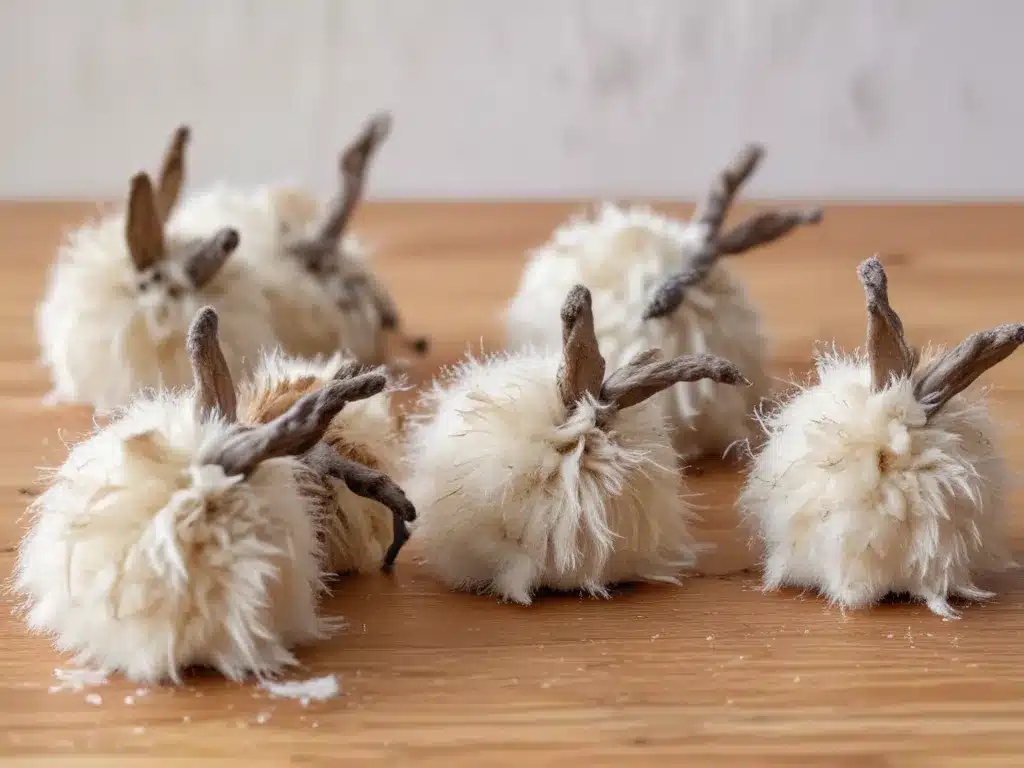Introduction
As a house cleaning enthusiast, I have encountered countless dust bunnies lurking in the darkest corners of my home. These pesky invaders not only create an unsightly mess but can also exacerbate allergies and respiratory issues. Fortunately, I have discovered a simple and cost-effective solution: homemade dusting spray. This DIY concoction is not only effective in capturing dust but also offers a natural and environmentally friendly alternative to harsh chemical cleaners.
The Importance of Dusting
Dusting is a crucial aspect of maintaining a clean and healthy living environment. Dust accumulation can lead to various problems, including:
-
Allergies and Respiratory Issues: Dust is a breeding ground for allergens, such as dust mites, pet dander, and pollen, which can trigger allergic reactions and exacerbate respiratory conditions like asthma.
-
Aesthetic Concerns: Dust can settle on surfaces, creating an unsightly appearance and diminishing the overall cleanliness of your home.
-
Damage to Surfaces and Electronics: Over time, dust buildup can scratch and damage delicate surfaces, clog air vents, and potentially cause malfunctions in electronic devices.
By incorporating regular dusting into your cleaning routine, you can effectively combat these issues and maintain a healthier, more visually appealing living space.
The Benefits of Homemade Dusting Spray
While commercial dusting sprays are readily available, opting for a homemade solution offers several advantages:
-
Cost-Effective: Homemade dusting sprays are incredibly inexpensive to make, as they typically utilize common household ingredients.
-
Environmentally Friendly: By avoiding harsh chemicals found in many commercial cleaners, you can reduce your environmental impact and contribute to a greener planet.
-
Customizable: With a homemade dusting spray, you have the flexibility to adjust the ingredients to suit your preferences, such as adding essential oils for a pleasant scent or incorporating natural disinfectants.
-
Safer for Sensitive Individuals: Those with sensitivities or allergies to synthetic fragrances or chemicals can enjoy a safer cleaning experience with a homemade dusting spray.
Homemade Dusting Spray Recipe
Now that you understand the importance of dusting and the benefits of a homemade solution, let’s dive into the recipe for creating your very own dusting spray.
Ingredients:
- 1 cup of warm water
- 1/4 cup of white vinegar
- 1/4 cup of rubbing alcohol (optional, for extra cleaning power)
- 10-15 drops of essential oils (optional, for added fragrance)
- Spray bottle
Instructions:
-
Combine the Ingredients: In a clean spray bottle, mix the warm water, white vinegar, and rubbing alcohol (if using). Swirl the bottle gently to combine the liquids.
-
Add Essential Oils (Optional): If desired, add 10-15 drops of your favorite essential oils to the mixture. Popular choices include lemon, lavender, or eucalyptus, as they provide a fresh and invigorating scent.
-
Shake Well: Once all the ingredients are added, secure the spray bottle lid and shake vigorously to ensure everything is well combined.
-
Label and Store: Clearly label the spray bottle with the contents and date of preparation. Store the homemade dusting spray in a cool, dry place until ready for use.
Dusting Techniques
With your homemade dusting spray in hand, it’s time to tackle those dust bunnies with the proper techniques:
-
Start from Top to Bottom: Begin dusting higher surfaces, such as ceiling fans, shelves, and window sills, and work your way down to lower areas. This prevents dislodged dust from settling on already cleaned surfaces.
-
Use Microfiber Cloths: Invest in high-quality microfiber cloths, as they are exceptionally effective at trapping and lifting dust particles from surfaces.
-
Spray and Wipe: Lightly mist the surface you wish to dust with your homemade spray, allowing a few seconds for the solution to settle. Then, using a clean microfiber cloth, wipe the area in a gentle sweeping motion, capturing the dust and grime.
-
Pay Attention to Nooks and Crannies: Don’t forget to dust those hard-to-reach areas, such as baseboards, picture frames, and the spaces between furniture. Use a small brush or the crevice tool of your vacuum cleaner to access these tight spots.
-
Freshen Up Fabrics: To remove dust from upholstered furniture, curtains, and other fabric surfaces, lightly mist the homemade dusting spray onto a clean microfiber cloth and gently wipe the areas in a sweeping motion.
Maintenance and Troubleshooting
To ensure the longevity and effectiveness of your homemade dusting spray, consider the following maintenance tips:
-
Replenish as Needed: As you use up the dusting spray, simply mix up a new batch following the recipe provided.
-
Shake Before Use: Before each application, give the spray bottle a thorough shake to ensure the ingredients are well combined.
-
Adjust the Recipe: If you find the spray too strong or too weak, feel free to adjust the ratios of the ingredients to suit your preferences.
-
Check for Surface Compatibility: While the homemade dusting spray is generally safe for most surfaces, always test on a small, inconspicuous area first to ensure compatibility, especially with delicate or antique items.
By following these tips and techniques, you can effectively banish dust bunnies from your home while embracing a more natural and cost-effective cleaning approach.
Conclusion
Embracing homemade dusting sprays is a simple yet powerful way to maintain a clean, healthy, and visually appealing living environment. Not only does this DIY solution save you money, but it also allows you to take control of the ingredients you introduce into your home. By following the recipe and dusting techniques outlined in this article, you can bid farewell to those pesky dust bunnies and enjoy a refreshingly clean space. So, why not give it a try and experience the benefits of a homemade dusting spray for yourself?







